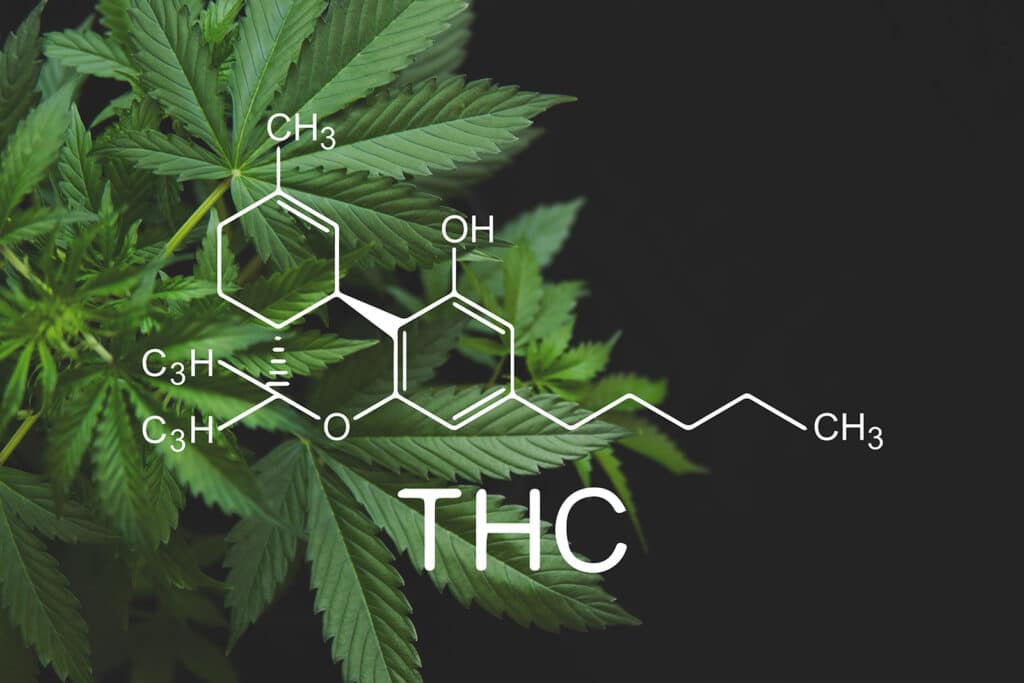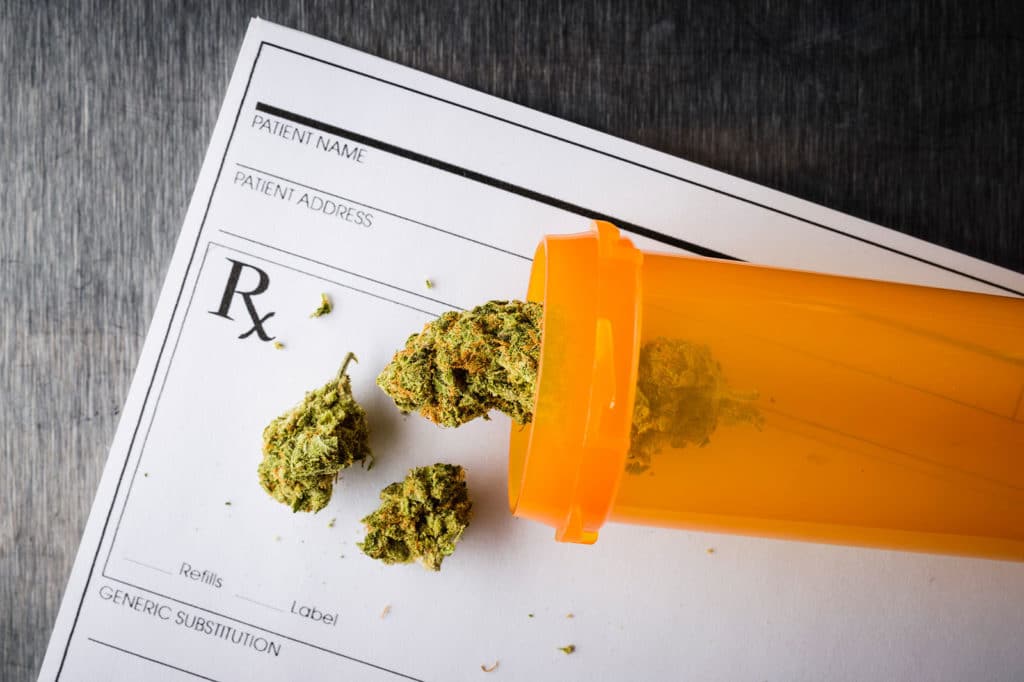A Look at THC-O and Its Effects
THC-O or Tetrahydrocannabinol-O-acetate is a non-natural cannabinoid, meaning it is not found naturally in a hemp plant. This can create effects quite different from other cannabinoids, such as THC and CBD. Let’s delve into THC-O, its chemistry, and its effects on our bodies.
Table of Contents
- 1 THC-O Versus Cannabinoids (THC and CBD)
- 2 The Background and Chemistry of THC-O
- 3 The Endocannabinoid System (ECS) and THC-O Interaction
- 4 What Are the Potential Therapeutic Effects of THC-O?
- 5 What Are the Psychoactive Effects of THC-O?
- 6 Safety, Side Effects, and Risks of THC-O
- 7 THC-O Consumption Methods and Dosage
- 8 Future Prospects and Research of THC-O
- 9 Conclusion
THC-O Versus Cannabinoids (THC and CBD)
THC-O can be considered the “chemical version” of THC. However, THC-O is a lot more potent than THC, with lab tests showing THC-O to be three times stronger than THC. This is because the synthesis process makes it easier for THC-O to bind to the receptors in our brain, resulting in a more intense psychoactive effect. THC-O also produces psychedelic effects.

While THC is converted into something more potent when your liver processes it, THC-O does not undergo the same transformation. What this means is that the effects of THC-O are more immediate and more intense than other cannabinoids.
THC-O has not been studied as extensively as THC and CBD, so there is still much to learn about its potential medical benefits and possible drawbacks. The drawbacks may enter during the drug’s synthesis, as it can become contaminated by other products. Still, early research has suggested that THC-O may have a wide range of potential medical uses, including as an anti-inflammatory, analgesic, and antiemetic drug.
The Background and Chemistry of THC-O
THC-O was first discovered by the U.S Army during the Edgewood Arsenal Experiments, when researchers were looking to study the chemical properties of THC and its derivatives.
The synthesis of THC-O involves modifying the chemical structure of THC. THC is first converted into THCA, or Tetrahydrocannabinolic Acid. The THCA is then acetylated, meaning acetic anhydride is added to its chemical structure, resulting in THC-O.
THC-O has not been approved by the U.S. Food and Drug Administration (FDA) or the European Medicines Agency (EMA) for medical use. This means that it is not legal to market or sell THC-O as a medication or dietary supplement. in February of 2023, the DEA announced that THC-O is an illegally controlled substance.
The Endocannabinoid System (ECS) and THC-O Interaction
The endocannabinoid system (ECS) is a network of receptors and molecules that are found throughout our body, including in the brain, organs, tissues, and immune cells. The system regulates a number of our physiological processes, including pain, appetite, mood, and sleep.
The ECS plays an important role in maintaining homeostasis or balance in the body. For example, when there is inflammation in the body, our bodies produce endocannabinoids to help reduce inflammation by interacting with cannabinoid receptors in the immune system. In a similar way, when there is a need for pain relief, the ECS is activated to produce endocannabinoids that interact with cannabinoid receptors in the nervous system.
The ECS also plays a role in the effects of cannabis and cannabinoids, such as THC and CBD. These compounds interact with cannabinoid receptors in our body, producing a range of effects, such as pain relief, relaxation, and euphoria.
THC-O interacts with the body’s endocannabinoid system (ECS), and specifically with the CB1 and CB2 receptors.
CB1 receptors are found in the central nervous system, specifically in the brain. They are responsible for balancing out the psychoactive effects of cannabinoids, such as THC. When THC-O binds to CB1 receptors, it produces a range of effects. These effects include increased appetite, altered perception of time, and feelings of euphoria.
However, THC-O also differs from THC in the way it binds to CB1 receptors. Because of its chemical structure, THC-O may have a stronger binding affinity to CB1 receptors than THC. This means that even small amounts of THC-O can produce powerful psychoactive effects.
CB2 receptors, on the other hand, are primarily found in the immune system and peripheral tissues. They are responsible for balancing out the anti-inflammatory and analgesic effects of cannabinoids. THC-O also interacts with CB2 receptors, producing effects such as pain relief and reduced inflammation.

What Are the Potential Therapeutic Effects of THC-O?
Like THC, THC-O does have its potential therapeutic effects. Some of these include:
- Analgesic properties: THC-O can offer pain relief to patients. Since the effects of THC-O are felt only after the body metabolizes the drug, pain relief will be delayed.
- Anti-inflammatory effects: THC-O can also reduce inflammation, as it interacts with our CB2 receptors.
- Antioxidant properties: THC-O can also protect our cells from antioxidant stress.
- Neuroprotective effects: When taken in small doses, THC-O may have neuroprotective effects on our brain.
- Anxiolytic and antidepressant properties: THC-O effects the body in much the same way as THC. Like THC, it has anxiolytic and antidepressant properties.
- Appetite regulation: For patients suffering from severe nausea, both THC and THC-O can be taken to help with appetite regulation. In the case of THC-O though, smaller doses should be taken.
Much more research is needed to explore the effects of THC-O on our bodies. However, studies have shown the dangers of vaping THC-O. Fortunately, THC-O has not caused any overdoses. Still, contamination of THC-O could take place during the synthesis of the drug. As a result, greater transparency and oversight are needed.
What Are the Psychoactive Effects of THC-O?
As mentioned, THC-O is estimated to be three times more potent than THC and offers a greater high than regular THC. However, these effects are not felt until the body absorbs the drug. Thus, there is a delayed reaction. Some users have experienced hallucinations, anxiety, paranoia, and vomiting.
Like with any drug, the individual response to THC-O may differ and can be influenced by a variety of factors. These include:
- Genetics and body type: Genetic variations can affect the way your body metabolizes and responds to THC-O. In addition, women respond to drugs differently than men, as do heavier versus lighter individuals.
- Tolerance: Frequent cannabis use can lead to a higher tolerance for drugs. This can reduce the effects of THC-O on your body.
- Administration: The way you consume THC-O — smoking, edibles, vaping — can influence the rate and extent of how THC-O is absorbed by your body.
- Dosage: The amount of THC-O that you consume will, of course, have an affect on the intensity and duration of the drug’s effects.
- Other drugs or alcohol: The presence of other drugs, medications, or alcohol in your system can interact with THC-O, possibly influencing the drug’s effect on your body.
Safety, Side Effects, and Risks of THC-O
Due to the fact that THC-O is more potent than natural cannabinoids, there are some side effects to be aware of. Some of the short-term side effects of THC-O may include:
- Nausea and vomiting
- Lethargy
- Dizziness
- Sedation
- Hallucinations
- Anxiety
Some of the potential long-term side effects may include:
- Respiratory issues: Smoking or inhaling THC-O can irritate the lungs and lead to chronic respiratory issues or even lung injuries.
- Mental health issues: Chronic THC-O use can increase the risk of mental health issues, such as depression, anxiety, and psychosis.
- Impaired cognitive function: Long-term THC-O use may lead to impaired cognitive function, including difficulties with memory, attention, and decision-making abilities.
- Addiction: THC-O use can lead to addiction in some individuals.
- Work issues: Chronic THC-O use can affect your ability to keep your job due to impaired cognitive function, missed work, and other factors.

Potential Drug Interactions
Given the potency of THC-O, it may react with other drugs you are taking, such as anti-depressants, heart medicine, cholesterol medication, and medicine for diabetes. To minimize potential drug interactions, try to avoid taking THC-O while other medications and drugs are still in your system.
The effects of mixing harder drugs, such as cocaine, opioids, and heroine, can be fatal. Even mixing alcohol with THC-O can result in dangerous consequences.
Risks Associated With Excessive Use
Since THC-O has a delayed reaction, it can be easy to overconsume it. As a result, you should be more cautious when taking it. There are risks associated with excessive use. These risks include:
- Severe vomiting
- Impaired coordination
- Psychotic symptoms
- Vehicle accidents that may be fatal
Contraindications and Special Considerations
Because THC-O is a synthesized drug, special care should be taken in its manufacture. Although the base of THC-O is derived from a cannabis plant, once chemical extractions are performed, the substance potentially becomes something else. In addition, the process of synthesizing THC-O is dangerous as acetic anhydride is flammable and explosive. Plus, additives and by-products may taint the final product. Finally, there are not enough studies to show how our bodies break down the substances in THC-O.
THC-O Consumption Methods and Dosage
THC-O is available in various forms:
- Tinctures: Available in either 1000mg or 2500mg of THC-O. Binoid offers 90% distillate THC-O and 10% MCT oil.
- Edibles: Gummies are available in different flavors.
- Vapes: Vaping is another way to consume THC-O, although this can irritate your lungs and cause respiratory issues.
- Topicals: These are lotions and oils that are infused with THC-O for external pain relief.
Factors Affecting the Bioavailability and Absorption
There are several factors that can affect the bioavailability and absorption of THC-O. These include:
- Chemical properties: Since THC-O is a synthesized drug and a more concentrated form of THC, the chemical properties make it a more potent drug.
- Type of dosage: The way the drug is consumed can also affect the bioavailability and absorption of THC-O. For example, edibles must pass through the intestinal wall before entering the bloodstream. Although, the effect of the drug will be delayed, the effects will last longer than vaping, for example.
- Food and drink: Food and drink can also affect how your body absorbs THC-O. Some drugs are better absorbed when taken with food, while others are better absorbed on an empty stomach.
- First-pass metabolism: Both THC and THC-O are metabolized the first time they go through the liver. This reduces their bioavailability.
- Drug interactions: How THC-O interacts with other drugs will affect the bioavailability and absorption of the drug. Some drugs may inhibit or speed up the metabolism of THC-O. Not enough studies have been performed with THC-O and other drugs, however.
If you plan on taking THC-O, start with a small dose and keep a glass of water nearby. It’s important that you are also in a comfortable location. Don’t increase your the amount you take until you are sure of how it affects your body and there are no negative side effects.

Future Prospects and Research of THC-O
Although more studies need to be carried out, a new study does raise concerns over vaping THC-O. When THC-O is heated in a vape, it produces ketene, which is a “highly potent lung toxicant.”
If given in small doses as an edible, tincture, or topical, however, THC-O acts similar to THC and can help with appetite regulation, anxiety, stress, and even depression. However, the purity of the THC-O must be confirmed before it is administered to patients.
Like with any new drug on the market, there are always challenges and considerations. The same applies to THC-O. Some considerations for the public to consider are:
- Safety: The safety of THC-O must be thoroughly evaluated to ensure there are no harmful side effects or interactions with other drugs.
- Efficacy: THC-O must be shown to be effective in treating the condition it is intended for.
- Effects on the body: More studies need to be carried out with THC-O to understand how it is absorbed, metabolized, and eliminated from the body, as well as its effects on the body.
- Manufacturing: There must be greater transparency in how THC-O is manufactured so that impurities entering the synthesis process are minimized.
- Approval from regulatory agencies: It is important that THC-O be evaluated by regulatory agencies, such as the FDA, to ensure that it meets safety and efficacy standards before it can be legally marketed to the public.
Conclusion
To conclude, THC-O is a man-made cannabinoid that is said to be three times more potent than THC. Like THC, there are potential therapeutic benefits, such as helping patients with appetite regulation, anxiety, and stress. In small doses, THC-O can provide numerous benefits.
However, it’s important to take THC-O in small doses since the effects of THC-O are not felt until the body metabolizes it. In addition, until further research is carried out on the effect the drug has on our bodies, users should proceed with caution.
Published on: 2023-03-28
Updated on: 2025-04-11


